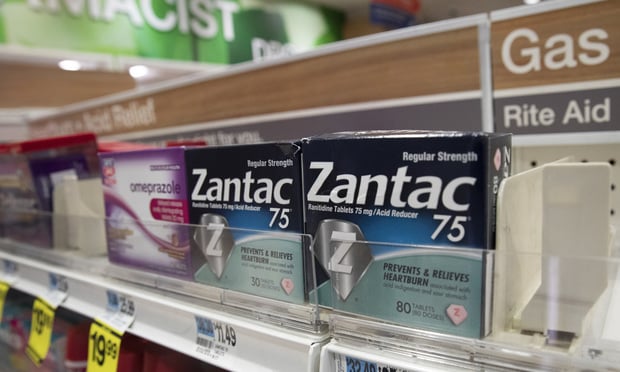It's rare to find a broker these days who hasn't heard of gapproducts. Gap plans, designed to supplement high-deductible medicalplans, have become standard in the benefits industry. Yet, gapplans continue to be somewhat controversial and oftenmisunderstood.
|Related: More households covered by lifeinsurance
|Merriam-Webster provides one definition of gap as a “hole orspace where something is missing.” A medical plan with a highdeductible creates a “gap” between what the medical carrier paysand what the insured has to pay out of pocket. And supplementalmedical gap plans aim to fill that space.
|But isn't the purpose of most insurance to fill some kind offinancial gap? Isn't there a hole or space in a financial pictureif someone has to miss work for physical therapy following a tumbledown the stairs? That gap can be filled by an accident plan. Wouldthere be a hole or space in someone's financial plan if a spousehad a heart attack and couldn't work for a while? Critical Illnessplans can fill those gaps, removing some of the financial strainand allowing the focus to shift to recovery.
|Don't be fooled. While many insurance products fill gaps, theterm “gap insurance” is generally accepted and widely used to meanonly one thing: supplemental medical coverage that pays based onthe hole or space the major medical plan leaves uncovered in theform of deductibles, coinsurance, and copays.
|There's nothing new about gap plans, which are designed to fitunder a major medical plan and cover much of an employee'sout-of-pocket costs left after major medical has paid. And asdeductibles and out-of-pocket costs have skyrocketed, the demandfor gap plans has similarly grown.
||
Over the past 20 years, first-dollar health insurance coveragehas become as rare as the cassette player. And yet, the worker whohas difficulty withdrawing a $20 bill from the ATM will strugglegreatly with a $1,000 deductible.
|Related: What's driving critical illnessinsurance?
|When accidents happen or diseases strike, having a source offunds to assist with unexpected expenses can make a profounddifference. That “hole or gap” may be overwhelming withoutinsurance protection.
|Gap plans can be built in several ways. A very common approachis to reduce the total premium cost to the employer by raisingdeductible and out-of-pocket maximums and directing a portion ofthose dollars toward a supplemental gap product.
|Often, the broker will leave the original deductible exposureintact.
|The intent is to control the employer's expenses, and gapproducts can be quite useful in this regard.
|One new trend we're seeing is brokers aiming for richerfirst-dollar benefits instead of focusing solely on a premiumreduction. When this can be accomplished with a gap product, theresult is quite dramatic. Adding a gap plan to high-deductiblemedical coverage may create valuable first-dollar benefits.
|While gap products are generally designed with exclusions,typically they are able to provide first-dollar benefits for thebig ticket events like hospitalization, outpatient surgery in ahospital or doctor's office, and more. Some gap plans even offerfirst-dollar benefits for routine medical events such as doctor'soffice visits and screening tests.
|When employees ask their employers if they provide benefitsbecause they have to or because they want to, they can direct themtowards option 1) save more money; or option 2) make the planricher at the lowest cost.
|Related: Taking another look at disabilityinsurance
|Imagine showing an employer a way to provide first-dollarcoverage. Many employees have probably never had first-dollarcoverage before, and will see that as a huge benefit.
|It's widely acknowledged that employers offer benefits toattract the best talent, to compensate them and to tie them moreclosely to the company. Providing first-dollar benefits for medicalevents demonstrates an employer's goodwill, and can make financialsense, too. Gap plans can be a powerful tool to help employerscontrol their health care costs while easing some of theout-of-pocket medical burden for employees.
|Like everything else health insurance-related today, much is upin the air pending administrative changes to the ACA. But one thingseems fairly certain to me; I doubt that medical carriers willsuddenly lower deductibles and out-of-pocket costs. And until thatday, I'll continue to educate brokers on the benefits of gapplans.
|Want to know more? Be sure to catch my session “Gap Plans: Factor Fiction” at the BenefitsPRO Expo in Indianapolis. I look forward toseeing you there!
Complete your profile to continue reading and get FREE access to BenefitsPRO, part of your ALM digital membership.
Your access to unlimited BenefitsPRO content isn’t changing.
Once you are an ALM digital member, you’ll receive:
- Critical BenefitsPRO information including cutting edge post-reform success strategies, access to educational webcasts and videos, resources from industry leaders, and informative Newsletters.
- Exclusive discounts on ALM, BenefitsPRO magazine and BenefitsPRO.com events
- Access to other award-winning ALM websites including ThinkAdvisor.com and Law.com
Already have an account? Sign In
© 2024 ALM Global, LLC, All Rights Reserved. Request academic re-use from www.copyright.com. All other uses, submit a request to [email protected]. For more information visit Asset & Logo Licensing.








